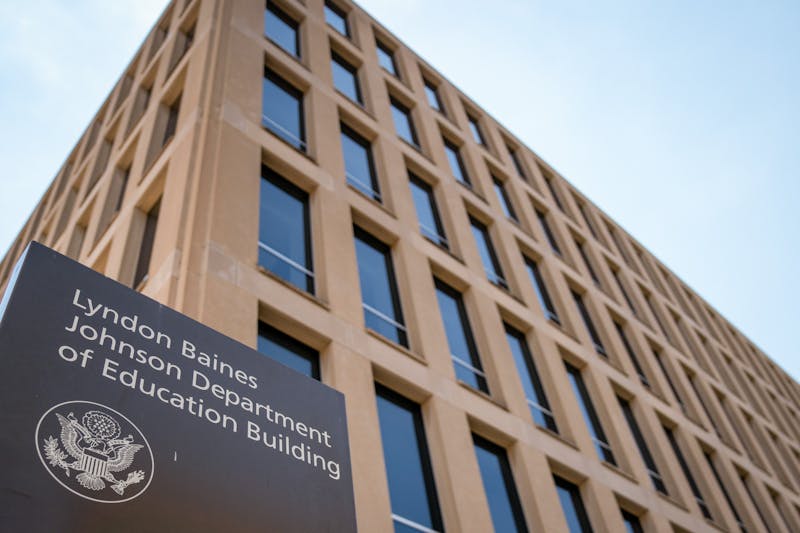While most students may only be familiar with the giant "P-E-N-N" lettering that appears at the top of the Medical School's new Biomedical Research Building 2/3, the six-month-old, 15-story building has drawn raves from both faculty and students. The 384,000-square-foot facility is not only the Medical School's new hub, it's also the largest Penn-owned building on campus, according to Steven Wiesenthal, vice president for architecture and facilities in the University of Pennsylvania Health System. Completed $1 million under budget in April, the $148 million building contains 16 seminar rooms, a 250-seat auditorium, a 4,500-square-foot rooftop faculty lounge, a bookstore operated by Barnes & Noble and an eatery run by Au Bon Pain, in addition to extensive laboratory space. The building is located behind the Quadrangle and adjacent to the Stellar-Chance Building, which was originally called BRB 1 when it opened in 1995. Officials are currently searching for a donor after whom to name the new structure. As the school's new hub, BRB 2/3 completes the ring of buildings that comprise the Medical School campus, Wiesenthal said. Every Med School building is connected by enclosed bridges. According to Wiesenthal, the most important aspect of BRB 2/3 is that it allows researchers of otherwise unrelated disciplines to work together. Officials maintain that BRB 2/3's new state-of-the-art labs will help to put the University on par with other large research institutions such as Johns Hopkins, Stanford and Yale universities, as well as the University of California at San Francisco. Officials also believe the addition of BRB 2/3 will increase research funding in years to come. Last year, Penn received $201 million in grants from the National Institutes of Health, second only to Hopkins. The building's new labs take up 11 of the 15 floors in BRB 2/3. Inside, research is carried out in fields such as developmental biology, neuroscience and reproductive biology, Wiesenthal said. Also, the new building contains the Institute for Human Gene Therapy and the Leonard and Madlyn Abramson Family Cancer Research Center, which was created two years ago with a $100 million donation from the Abramson family, he added. Wiesenthal credited the new building for helping to recruit Craig Thompson, a top cancer researcher, to head up the Abramson Center. Most researchers and students said they were happy with the consolidation of so many departments in one building. "I love it," said Patricia Labosky, a professor of Cell and Developmental Biology who works with mouse embryos. "It's the interactions, it's the ability to just walk next door and talk to someone who's an expert in another field [that makes this building great]." "It's a really nice floor plan," said Neuroscience Professor Jonathan Raper, who also does research in BRB 2/3. "It allows us to collaborate. It opened up a whole lot of contiguous space at once." Wiesenthal said only 80 percent of the building is currently occupied. Full occupancy is expected to be reached in another six months. According to Medical School Director of Finance Christopher Kops, about 80 percent of the $148 million spent on the building came from the Medical School's cash reserves. The other 20 percent was funded through tax-exempt bonds.
The Daily Pennsylvanian is an independent, student-run newspaper. Please consider making a donation to support the coverage that shapes the University. Your generosity ensures a future of strong journalism at Penn.
DonatePlease note All comments are eligible for publication in The Daily Pennsylvanian.







